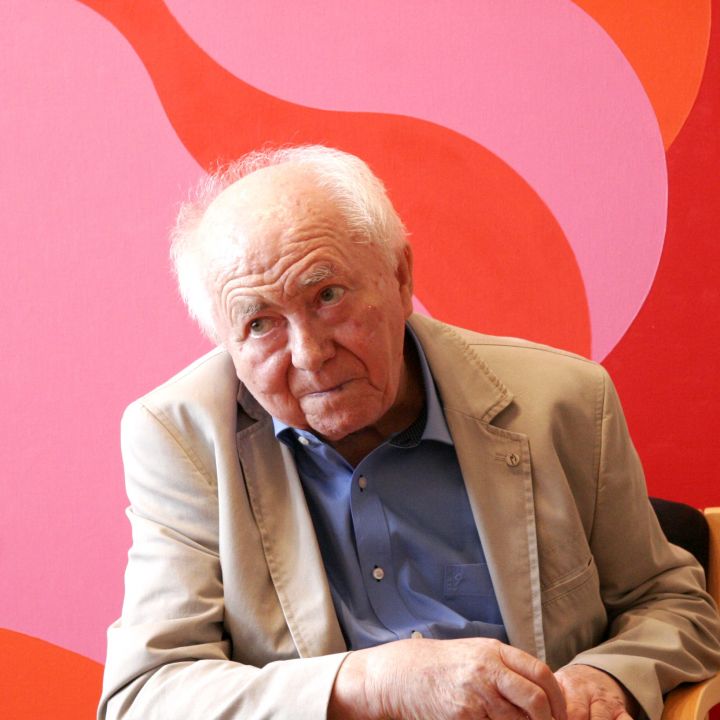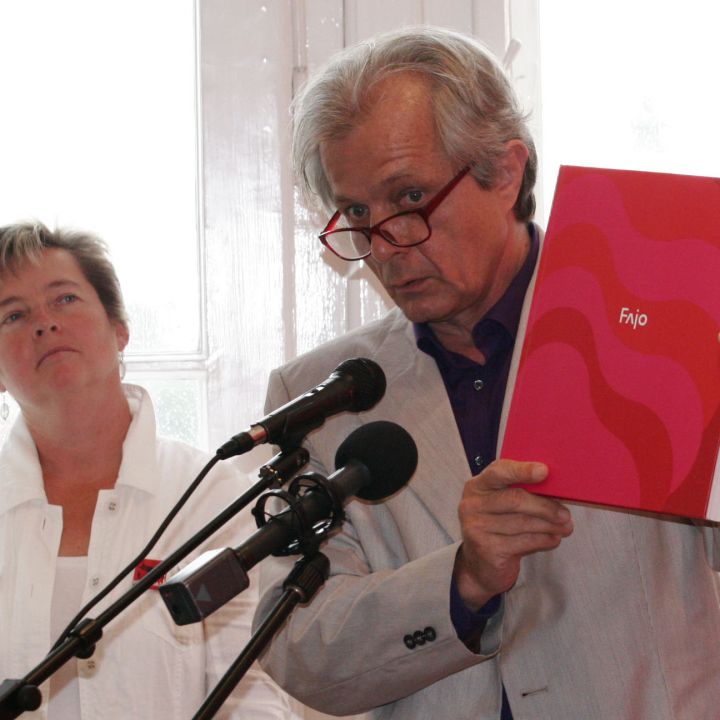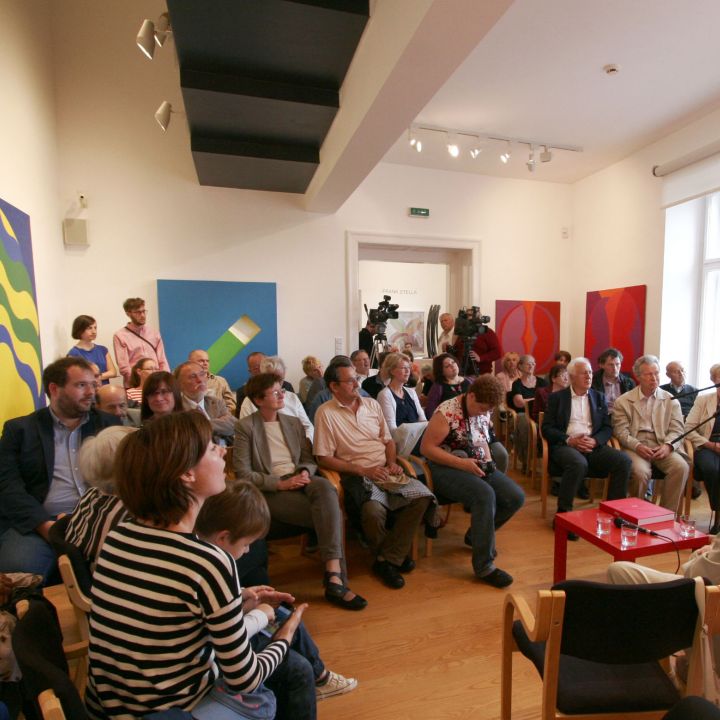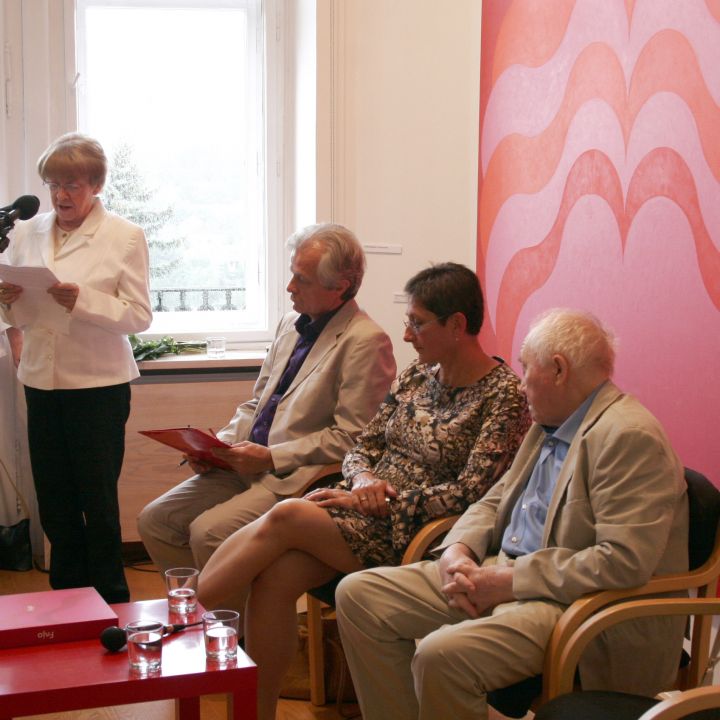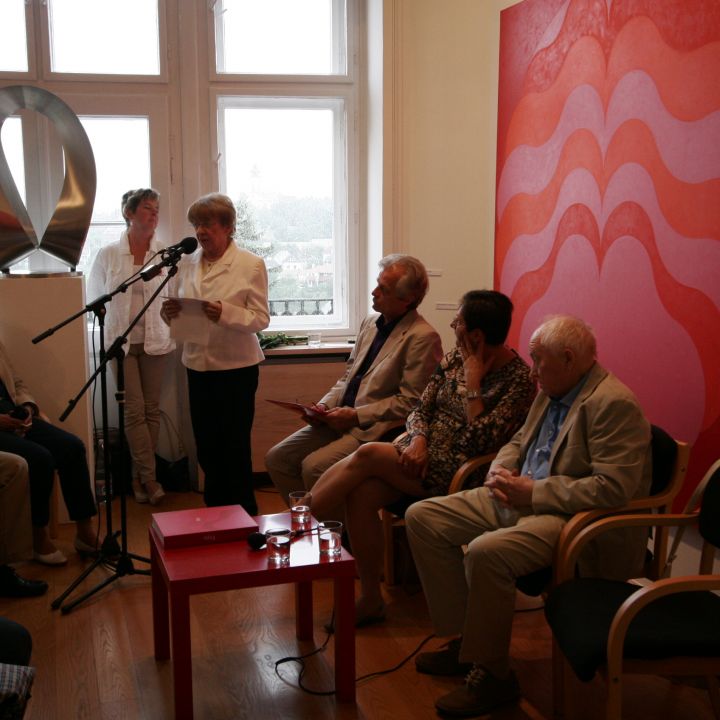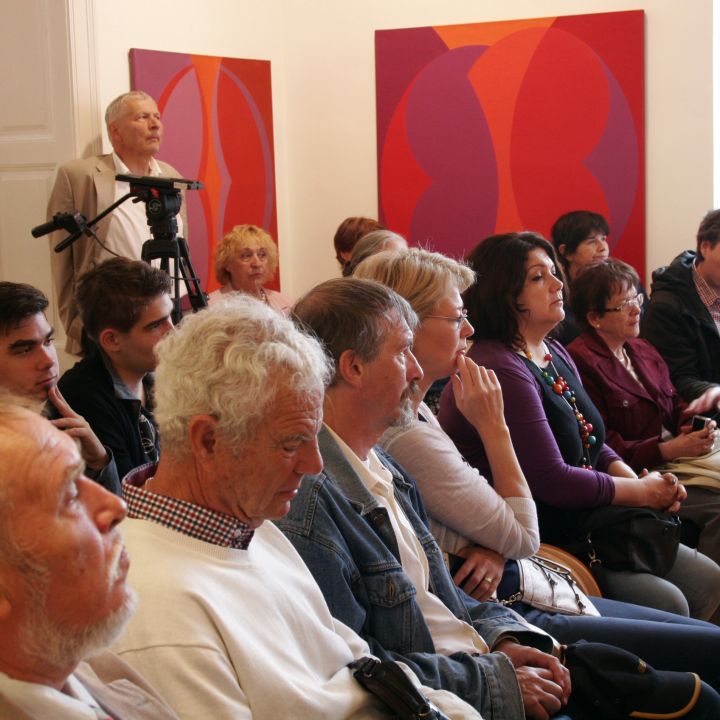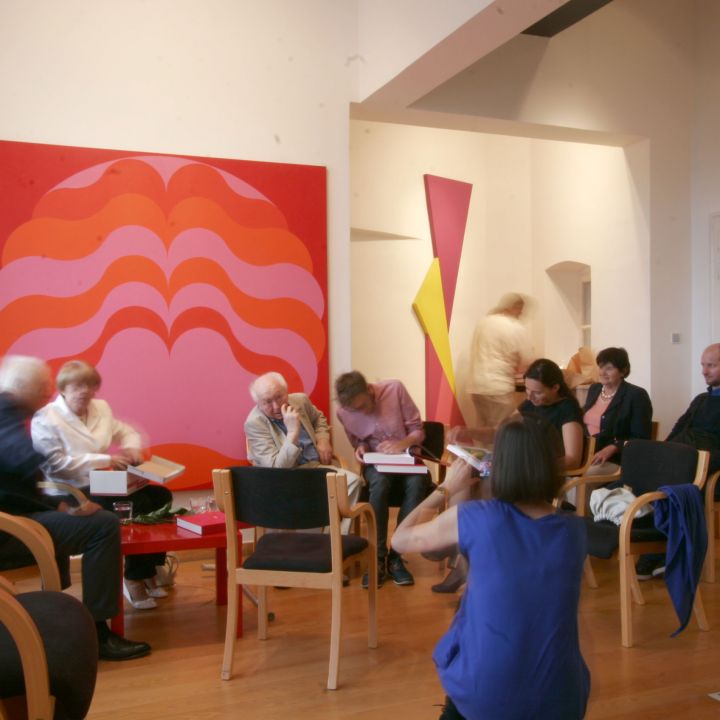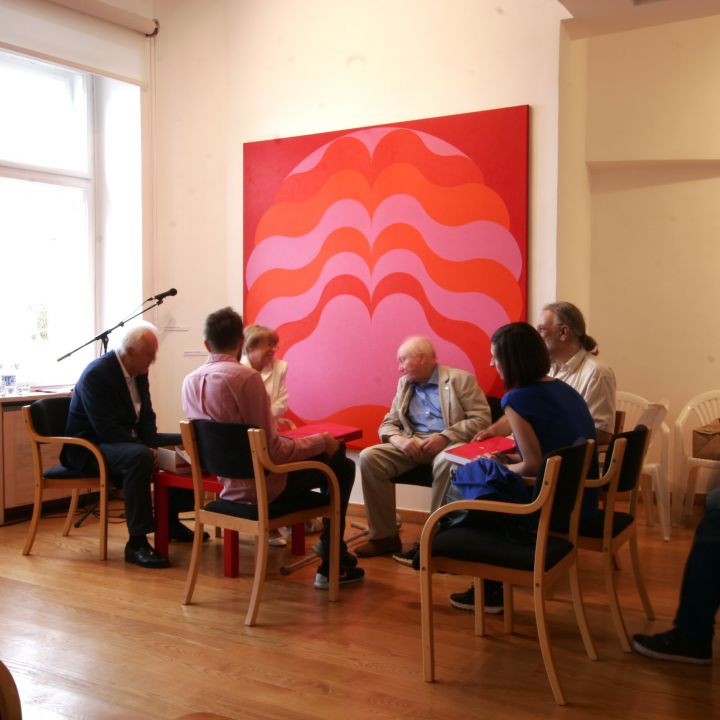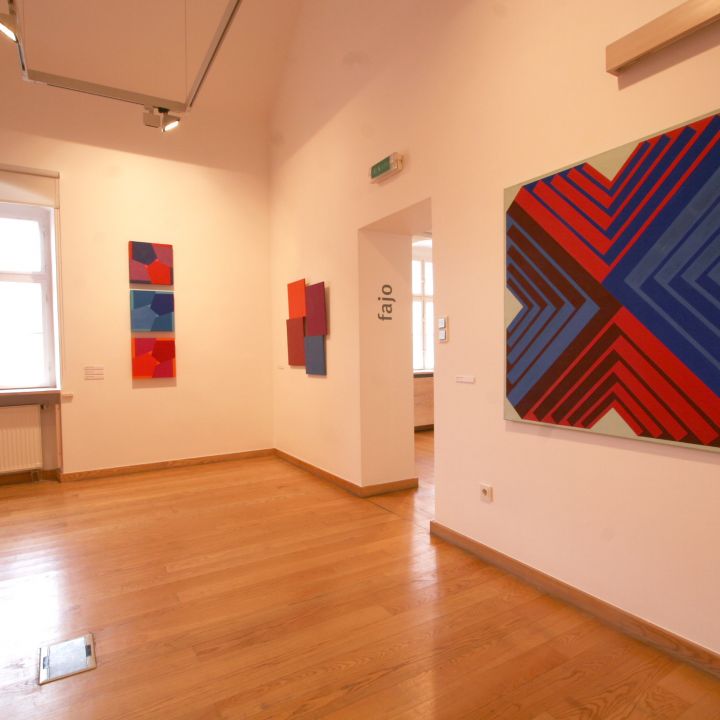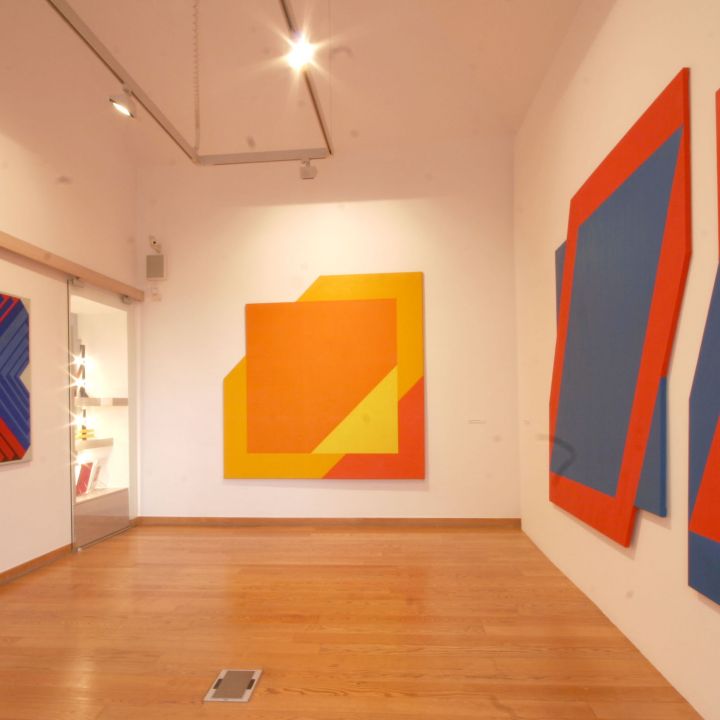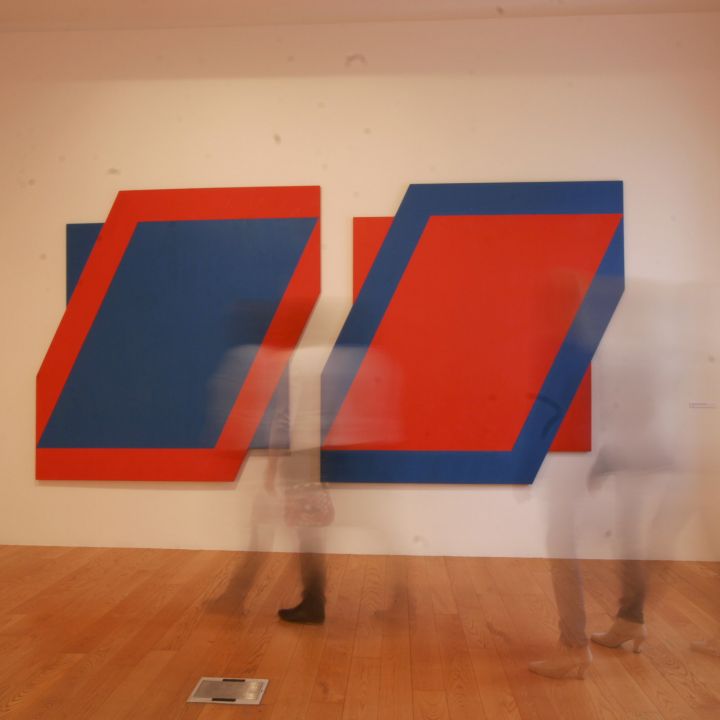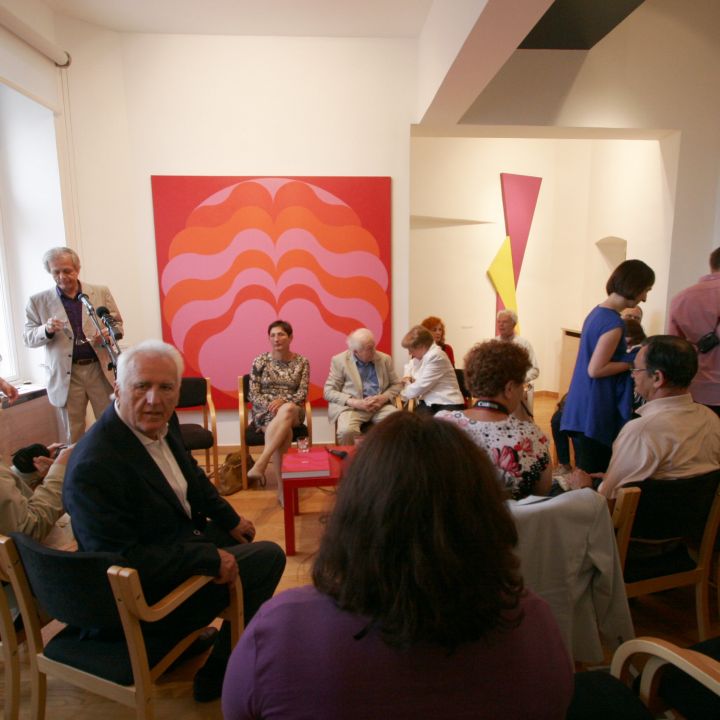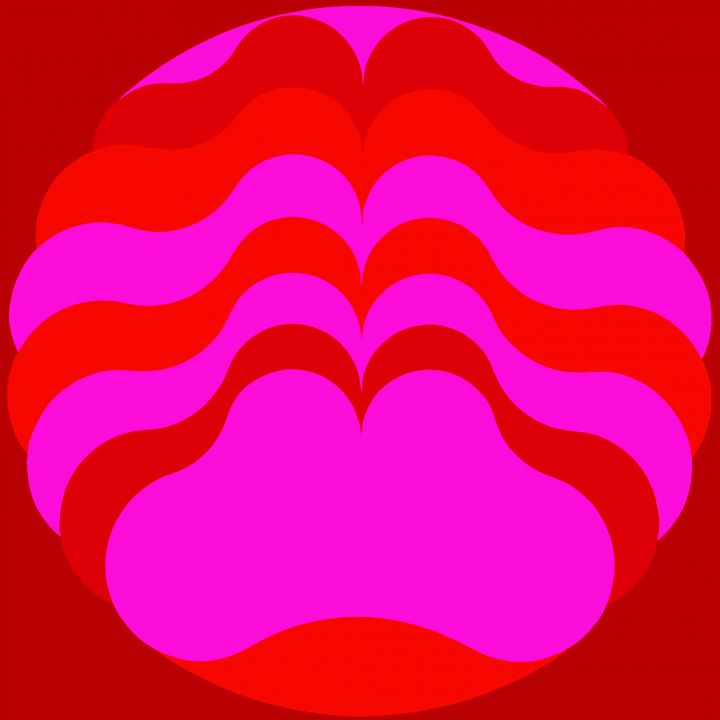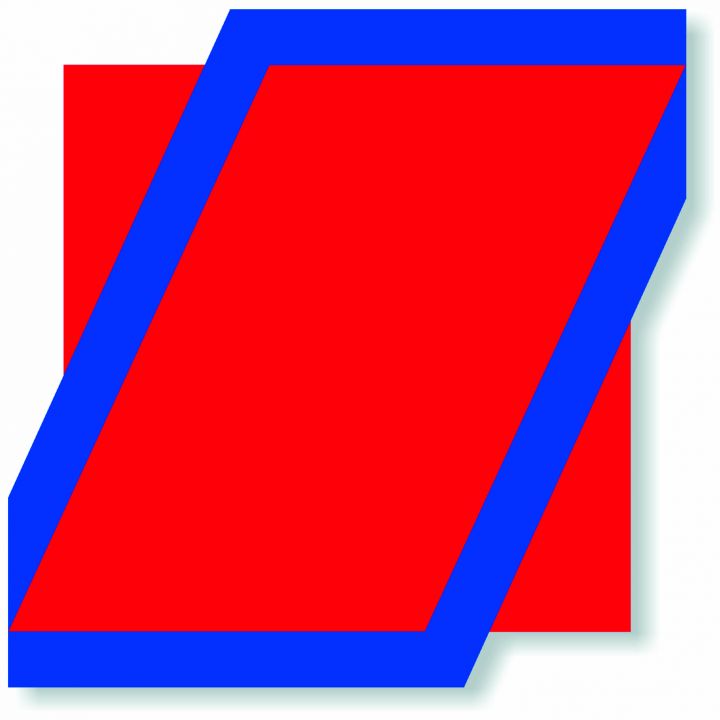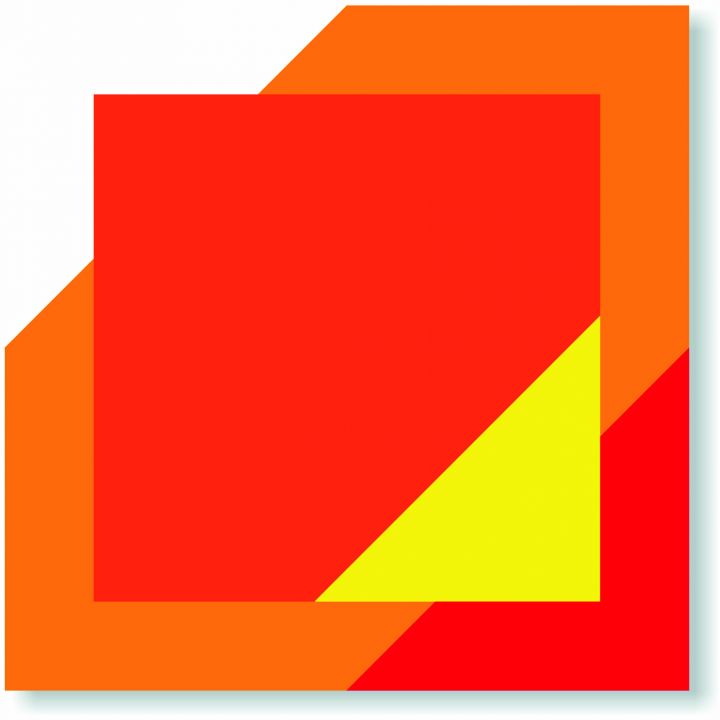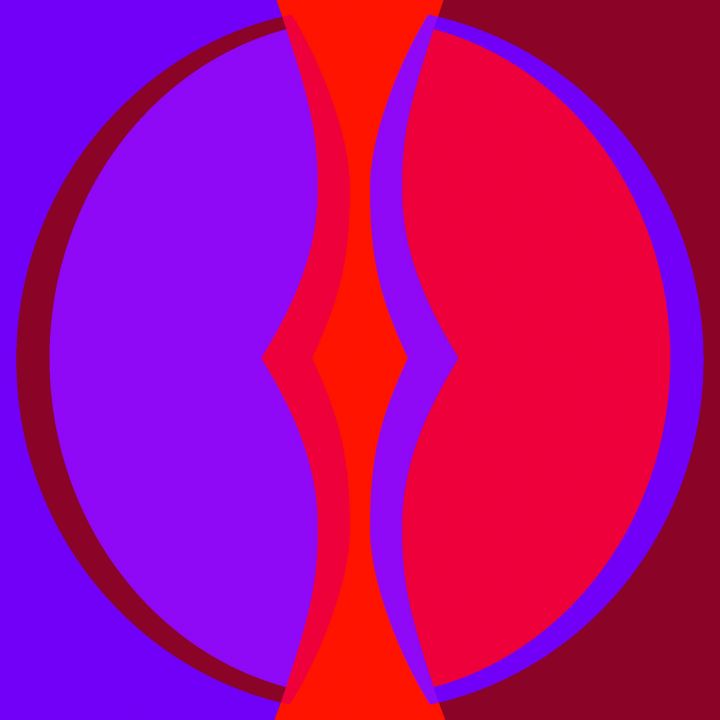In the exhibition spaces of the collection a larger, representative selection will be presented in collaboration with the artist, where sculptures and paintings will recall the highlights of his colourful oeuvre.
We've chosen iconic pieces from the painter's vast oeuvre, who will turn 80 next year. We have not attempted to sketch the whole career chronologically, but rather to show the evolution of motifs across the artist's different periods by juxtaposing his works, often decades apart. We have made a well-worked, exciting experiment by featuring the large paintings of János Fajó in our smaller spaces. In all, we exhibited 25 paintings, sculpted canvases, reliefs and almost as many sculptures. As in our previous exhibitions we stepped out of the enclosed spaces of the gallery and 5 of the sculptures were placed in the open-air green space next to the House of Arts.
János Fajó, a Munkácsy and Kossuth Prize winner graduated from the Hungarian College of Applied Arts in 1961, majoring in decorative painting. He considers Gyula Hincz and Lajos Kassák as the masters of his oeuvre, which is inspired by geometric traditions and the artistic approach of Constructivism. In 1974 he and his colleagues founded the Budapest Workshop, which gained international fame, where they carried out graphic reproduction of contemporary works. In an interview he himself says:
"On the one hand we have noticed that this genre is much more appreciated abroad, especially in the USA, but also in Western Europe, than in our country. On the other hand we saw it as a means of democratising art collecting, since a silkscreen print or an etching is accessible to many more people than a single work of art. We have been able to establish excellent contacts with many well-known figures on the international scene who have had their portfolios made with us. This, of course, required not only personal sympathy but also the highest quality production of the prints. It is with some pride that I say that without the Pest Workshop/Pesti Műhely the reproductions of artists such as Victor Vasarely or Max Bill would be in an order of magnitude fewer domestic collections today."
The compositional principle of his paintings is reduction, based on the reduction of natural forms to basic geometric shapes and the variability of these reductive elements. In his works the exact formal system combined with the basic colours and their variations results in a harmonious world of colours and forms, a pure system of proportions. In contrast to the impersonal, modelling approach of minimal art, however, his art retains its empirical roots, with sensuality playing a dominant role through the curved formal world derived from the circle.
This is how he describes the geometric forms that have defined his entire career:
"It is simple: it serves life best, the new functions of life. It is the art of pure form. Think of the circle: what can the circle do? We are not painting an apple, an object, Kassák said, but a form, a circle. Geometric art is not only self-expression - of course it is - whereas expressionism, for example, serves only self-expression. I also started making children's games so that children would get used to the basis of visual language at a very early age. From triangles, squares and circles, from these three elementary shapes we can build up all the things in the world. Geometry is eternal."

